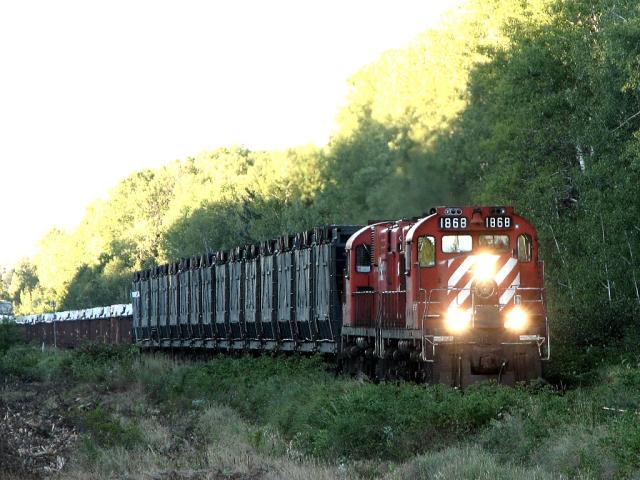The original, sample clearance was: "Item 1. OCS clearance #1234 to train CN 532, engine 2238. Item 5, proceed from Sparks to Andrews. Item 7, protect against Foreman Smith between Sparks and Andrews. Item 12, complete at 1225 RTC JBM."
Proceed versus Work Clearances
One point I made was that this is a "proceed" clearance, meaning the train* can only go in the direction indicated and cannot back up without getting a new clearance. A "work" clearance allows unlimited backup moves. Why wouldn't the RTC issue work clearances for every train?
Simply put, a work clearance gives the entire section of track to the train until the train crew releases it. This is fine if that train is the only one due to run on that section of track, but if someone else (another train, a maintainer, etc.) wants to use that section of track, they have to get permission from the first train.
Using a proceed clearance means the track behind the train is released as the train moves. If another train wants to follow the first train, all the RTC has to do is call the first train, find where their tail end is, then give a clearance to the second train up to the current position of the first train. As the second train approaches the end of its authority, it can call the RTC and repeat the whole process. This keeps more trains moving.
Rule 104
If you read the OCS clearance form, you may have noticed items 8 and 9.
Item 8: Rule 104(b) WARNING - You may encounter the following switch(es) lined and locked in the reverse position:
Item 9: Rule 104(b) PERMISSION - The following switch(es) may be left lined and locked in the reverse position:
I'm not sure why it says 104(b), because the CROR shows it as rule 104(i). It starts with "A main track switch may be left in the reverse position when;..." and has a list of conditions where it may be left in a reverse position.
Imagine you are the crew of a long, heavy freight train, say a loaded ore train leaving the Nepisiguit Subdivision near Bathurst, NB. You approach the switch at the east leg of the wye at Nepisiguit Junction and stop. The conductor dismounts and lines and locks the switch in the reverse position, allowing your train to proceed onto the mainline.
Without this rule, the conductor would have to wait until the train passed and stopped on the main line, then line and lock the switch in the normal position and walk the length of the train to the head end. Remember, they couldn't back the train up to pick up the conductor because they wouldn't have a clearance past the switch's mileage.
To save time, they are permitted to leave the switch in the reverse position. The next train to be given authority to pass that switch will have a note in their clearance that the switch may be reversed.

NBEC 1868 and the empty ore train are on the Nepisiguit Subdivision, having just left the main line
This was very common at Nepisiguit Junction, and likely still is. The empty train coming onto the Nepisiguit sub would put the switch in the reverse position and leave it reversed while the train went to Brunswick Mines, loaded up, and came back to the mainline. Because it was still reversed (assuming no other train went by in the meantime), the loaded train could roll right through without stopping. The next mainline train would stop and reline the switch before proceeding.
VIA 15 at Nepisiguit Junction, stopping to reline the switch.
The CROR are full of rules like this, used to protect the trains and also to help traffic flow easily and safely.
* I say "train", but strictly speaking I should say "movement" to be more general. What's the difference? Wait and see. :)
1 comment:
Thanks for a great series of posts, I hope there will be a few more!
These remind me of my childhood, when I used to live in Tide Head NB. A certain neighbor of mine and I used to dial-up each other's computers (this was a long time ago, he was using a Commodore 64, I was on a 486 I think). We would play 'trains' for hours, one of us would be RTC while the other was an engineer. We used OCS clearances and called out town names as we went down the imaginary Mont-Joli sub. Good times!
Post a Comment